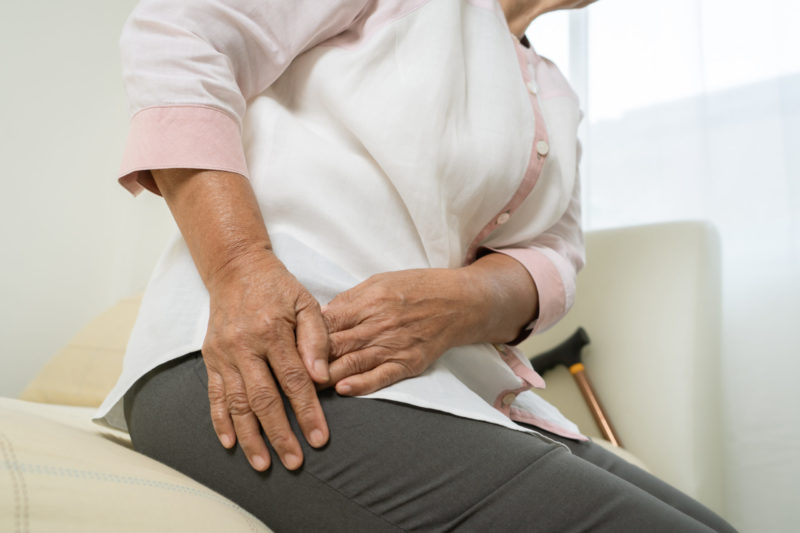There are many reasons you might start stumbling and falling more often as you get older. Older adults are more apt to have weak lower body muscles, trouble balancing, and vision problems that can make it difficult to spot trip hazards like uneven steps or the frayed edge of a throw rug. Many people take medications or have vitamin deficiencies that can cause dizziness.
And new research suggests that having both chronic low back pain and osteoarthritis (OA)-related hip pain are fall risk factors.
The study, which was published in the journal Arthritis Research & Therapy, observed 210 adults age 65 to 80 over the course of a year. During this time, they filled out surveys about levels of pain in their hip and lower back regions, their ability/confidence in balancing, disability related to lower back pain, and medications they take regularly, all of which could be factors in their risk of falling.
They also tracked the occurrences of falls using a “fall calendar,” which was sent to the researchers at the end of each month.
During the study, 89 participants (42 percent) fell a total of 219 times. Among participants who fell, 50 (56 percent) fell more than once. The researchers found that patients with chronic lower back pain, most of whom also had hip osteoarthritis, had a 43 percent chance of falling during the year-long study. This was significantly higher than the national estimates of fall incidents among this age group, which is 29 percent.
Additionally, participants who fell at least twice during the yearlong study period “had significantly greater hip OA impairment burden” compared to those who fell less frequently or not at all. The researchers added that “each increase in hip OA impairment burden was associated with a successively greater risk of falling.”
“Our findings are consistent with prior evidence that [American College of Rheumatology] criteria for hip OA are common in older adults with [chronic low back pain], and add to the body of literature that links hip OA signs and symptoms to greater fall risk in older adults,” the authors wrote.
The researchers hope this study will push health care providers to screen older adults with chronic back pain for hip OA, assess their overall fall risk, and recommend treatment and/or fall prevention strategies as necessary.
Want to Contribute to Arthritis Research? Here’s a Simple Way
If you are diagnosed with arthritis or another musculoskeletal condition, we encourage you to participate in future studies by joining CreakyJoints’ patient research registry, ArthritisPower. ArthritisPower is the first-ever patient-led, patient-centered research registry for joint, bone, and inflammatory skin conditions. Learn more and sign up here.
Knox PJ, et al. Hip osteoarthritis signs and symptoms are associated with increased fall risk among community-dwelling older adults with chronic low back pain: a prospective study. Arthritis Research & Therapy. March 3, 2021. doi: https://doi.org/10.1186/s13075-021-02455-5






